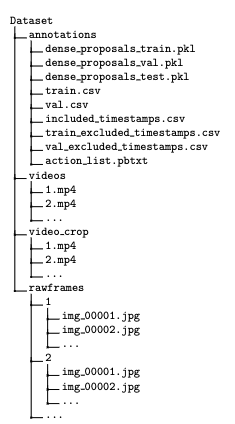如何实现可收起和展开的Table Section
这是一个简单的iOS swift项目,旨在介绍如何实现可收起和展开的table section,并且,项目不需要main storyboard,XIB,注册nib等,只需要纯的Swfit代码!
项目源代码:https://github.com/jeantimex/ios-swift-collapsible-table-section
如果你希望获得Swift 3.0的代码,可以在migrate-to-swift-3.0分支里找到,最终将会汇入master分支。
效果
如何实现可收起和展开的Table Section?
第一步. 准备数据
假设我们有如下的数据,它已经按照不同的section进行组织和整理,每个section都是一个Section结构(或对象):
struct Section {
var name: String!
var items: [String]!
var collapsed: Bool!
init(name: String,items: [String],collapsed: Bool = false) {
self.name = name
self.items = items
self.collapsed = collapsed
}
}
var sections = [Section]()
sections = [
Section(name: "Mac",items: ["MacBook","MacBook Air","MacBook Pro","iMac","Mac Pro","Mac mini","Accessories","OS X El Capitan"]),Section(name: "iPad",items: ["iPad Pro","iPad Air 2","iPad mini 4","Accessories"]),Section(name: "iPhone",items: ["iPhone 6s","iPhone 6","iPhone SE","Accessories"])
]
collapsed表示当前的section是否被收起或展开,默认下是false,即展开。
第二步. Section Header
根据苹果 API reference,我们应该使用UITableViewHeaderFooterView. 让我们创建一个section header的类来继承它,我们把这个section header类起名为CollapsibleTableViewHeader:
class CollapsibleTableViewHeader: UITableViewHeaderFooterView {
let titleLabel = UILabel()
let arrowLabel = UILabel()
override init(reuseIdentifier: String?) {
super.init(reuseIdentifier: reuseIdentifier)
contentView.addSubview(titleLabel)
contentView.addSubview(arrowLabel)
}
required init?(coder aDecoder: NSCoder) {
fatalError("init(coder:) has not been implemented")
}
}
当用户点击section header的时候我们需要收起或者展开这个section,为了实现这样的效果,让我们借用一下UITapGestureRecognizer. 同时我们需要将这个tap事件通知给table view并让它来更新section的collapsed值。
protocol CollapsibleTableViewHeaderDelegate {
func toggleSection(header: CollapsibleTableViewHeader,section: Int)
}
class CollapsibleTableViewHeader: UITableViewHeaderFooterView {
var delegate: CollapsibleTableViewHeaderDelegate?
var section: Int = 0
...
override init(reuseIdentifier: String?) {
super.init(reuseIdentifier: reuseIdentifier)
...
addGestureRecognizer(UITapGestureRecognizer(target: self,action: #selector(CollapsibleTableViewHeader.tapHeader(_:))))
}
...
func tapHeader(gestureRecognizer: UITapGestureRecognizer) {
guard let cell = gestureRecognizer.view as? CollapsibleTableViewHeader else {
return
}
delegate?.toggleSection(self,section: cell.section)
}
func setCollapsed(collapsed: Bool) {
// Animate the arrow rotation (see Extensions.swf)
arrowLabel.rotate(collapsed ? 0.0 : CGFloat(M_PI_2))
}
}
既然我们不用任何storyboard或者XIB,如何实现自动布局呢?答案是运用NSLayoutConstraint的constraintsWithVisualFormat函数。
override init(reuseIdentifier: String?) {
...
// arrowLabel must have fixed width and height
arrowLabel.widthAnchor.constraintEqualToConstant(12).active = true
arrowLabel.heightAnchor.constraintEqualToConstant(12).active = true
titleLabel.translatesAutoresizingMaskIntoConstraints = false
arrowLabel.translatesAutoresizingMaskIntoConstraints = false
}
override func layoutSubviews() {
super.layoutSubviews()
...
let views = [
"titleLabel" : titleLabel,"arrowLabel" : arrowLabel,]
contentView.addConstraints(NSLayoutConstraint.constraintsWithVisualFormat(
"H:|-20-[titleLabel]-[arrowLabel]-20-|",options: [],metrics: nil,views: views
))
contentView.addConstraints(NSLayoutConstraint.constraintsWithVisualFormat(
"V:|-[titleLabel]-|",views: views
))
contentView.addConstraints(NSLayoutConstraint.constraintsWithVisualFormat(
"V:|-[arrowLabel]-|",views: views
))
}
第三步. UITableView DataSource 以及 Delegate
首先,sections的数量为sections.count:
override func numberOfSectionsInTableView(tableView: UITableView) -> Int {
return sections.count
}
每个section里面cell的数量为:
override func tableView(tableView: UITableView,numberOfRowsInSection section: Int) -> Int {
return sections[section].items.count
}
接下来使用tableView的viewForHeaderInSection函数来渲染我们的section header:
override func tableView(tableView: UITableView,viewForHeaderInSection section: Int) -> UIView? {
let header = tableView.dequeueReusableHeaderFooterViewWithIdentifier("header") as? CollapsibleTableViewHeader ?? CollapsibleTableViewHeader(reuseIdentifier: "header")
header.titleLabel.text = sections[section].name
header.arrowLabel.text = ">"
header.setCollapsed(sections[section].collapsed)
header.section = section
header.delegate = self
return header
}
普通的cell就很简单了,没什么好说的:
override func tableView(tableView: UITableView,cellForRowAtIndexPath indexPath: NSIndexPath) -> UITableViewCell {
let cell = tableView.dequeueReusableCellWithIdentifier("cell") as UITableViewCell? ?? UITableViewCell(style: .Default,reuseIdentifier: "cell")
cell.textLabel?.text = sections[indexPath.section].items[indexPath.row]
return cell
}
最后一步. 如何收起和展开?
思路超级简单!如果该section的collapsed值为true,我们就将这个section里所有cell的高度都设为0,否则为 44.0!
override func tableView(tableView: UITableView,heightForRowAtIndexPath indexPath: NSIndexPath) -> CGFloat {
return sections[indexPath.section].collapsed! ? 0 : 44.0
}
切换收起和展开的函数如下:
extension CollapsibleTableViewController: CollapsibleTableViewHeaderDelegate {
func toggleSection(header: CollapsibleTableViewHeader,section: Int) {
let collapsed = !sections[section].collapsed
// Toggle collapse
sections[section].collapsed = collapsed
header.setCollapsed(collapsed)
// Adjust the height of the rows inside the section
tableView.beginUpdates()
for i in 0 ..< sections[section].items.count {
tableView.reloadRowsAtIndexPaths([NSIndexPath(forRow: i,inSection: section)],withRowAnimation: .Automatic)
}
tableView.endUpdates()
}
}
注意到我们不是简单的重绘整个section,实际上我们只需要重绘section里的所有cell就好,这样做的好处是避免了section header因重绘时闪烁的效果,最重要是的可以让我们更平滑地处理我们想要的动画效果,例如旋转那个箭头,改变背景颜色等等。
好了就这么多吧,如果你很感兴趣,请参考源码。
更多的关于table section收起和展开的项目
有时候你可能想要在grouped-style的table里实现section的收起和展开,我写了另外一个demo,https://github.com/jeantimex/ios-swift-collapsible-table-section-in-grouped-section. 实现的方法其实很类似。
作者: Yong Su @ Box Inc.

 软件简介:蓝湖辅助工具,减少移动端开发中控件属性的复制和粘...
软件简介:蓝湖辅助工具,减少移动端开发中控件属性的复制和粘... 现实生活中,我们听到的声音都是时间连续的,我们称为这种信...
现实生活中,我们听到的声音都是时间连续的,我们称为这种信... 前言最近在B站上看到一个漂亮的仙女姐姐跳舞视频,循环看了亿...
前言最近在B站上看到一个漂亮的仙女姐姐跳舞视频,循环看了亿... 【Android App】实战项目之仿抖音的短视频分享App(附源码和...
【Android App】实战项目之仿抖音的短视频分享App(附源码和... 前言这一篇博客应该是我花时间最多的一次了,从2022年1月底至...
前言这一篇博客应该是我花时间最多的一次了,从2022年1月底至... 因为我既对接过session、cookie,也对接过JWT,今年因为工作...
因为我既对接过session、cookie,也对接过JWT,今年因为工作...